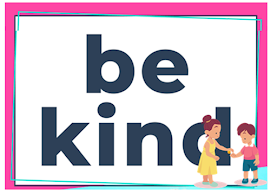What topics should I teach my 5-year-old? Teaching a 5-year-old involves a blend of foundational skills and engaging activities that nurture their cognitive, emotional, and social development. At this stage, children are curious, energetic, and eager to learn, making it an ideal time to introduce a variety of topics that lay the groundwork for future learning. Here’s a persuasive guide to the essential topics to teach a 5-year-old and why they are important.
1. Early Literacy Skills
Importance: Literacy forms the cornerstone of education and personal expression. At this age, children are ready to explore letters, sounds, and basic words, which sets the stage for reading and writing proficiency.
Approach: Use interactive methods such as alphabet games, storytelling, and rhyming songs. Introduce sight words and encourage your child to "read" simple books with pictures. Reading together daily and discussing stories helps build vocabulary and comprehension skills.
Example: Read books that match your child's interests, and ask questions about the story to develop critical thinking and narrative skills.
2. Basic Numeracy
Importance: Early numeracy skills help children understand mathematical concepts and problem-solving techniques. Counting, recognizing numbers, and understanding simple patterns are foundational skills for future math learning.
Approach: Use everyday situations to teach math, such as counting fruits during snack time, measuring ingredients for cooking, or sorting toys by size or color. Games like number puzzles and matching exercises make learning engaging.
Example: Create a number line in your home where your child can practice counting and identifying numbers through fun, hands-on activities.
3. Social and Emotional Skills
Importance: Social and emotional development is crucial for building healthy relationships and managing emotions. Teaching empathy, sharing, and effective communication helps children navigate social interactions and build resilience.
Approach: Role-play different scenarios to practice social skills and discuss feelings openly. Praise positive interactions and guide your child through resolving conflicts with peers. Model and encourage kindness, patience, and cooperation.
Example: Organize playdates where your child can practice sharing and taking turns, and discuss how different actions make others feel.
4. Physical Skills and Health
Importance: Physical development is vital for overall health and well-being. Fine and gross motor skills, such as using scissors, drawing, and balancing, support a child's physical growth and coordination.
Approach: Encourage activities that promote physical development, such as drawing, cutting with safety scissors, and outdoor play. Teach basic hygiene practices like washing hands and brushing teeth to instill healthy habits.
Example: Create an obstacle course at home or in the yard to improve coordination and balance, and make brushing teeth a fun routine with songs or games.
5. Science and Exploration
Importance: Curiosity about the natural world fosters a love for learning and scientific inquiry. Introducing basic science concepts encourages observation, experimentation, and critical thinking.
Approach: Conduct simple science experiments, explore nature, and discuss basic concepts like weather, plants, and animals. Use everyday experiences to spark curiosity and encourage questions.
Example: Grow a small plant together and observe its growth, or explore different types of leaves and rocks during a nature walk.
6. Creativity and Imagination
Importance: Creative play enhances problem-solving skills and cognitive flexibility. Activities that involve art, music, and imaginative play allow children to express themselves and explore different roles and scenarios.
Approach: Provide materials for drawing, painting, and crafting. Encourage imaginative play with costumes and props, and introduce basic musical instruments or songs. Support your child’s creative ideas and projects.
Example: Set up a “craft corner” with supplies for making art and allow your child to create freely, celebrating their creativity and imagination.
7. Language Development
Importance: Strong language skills support communication, reading, and writing. At this age, expanding vocabulary and understanding language patterns are crucial for academic success.
Approach: Engage in conversations with your child, introduce new words in context, and ask them to describe their thoughts and experiences. Use educational apps or programs that enhance language skills in a fun, interactive way.
Example: Play word games like “I Spy” with new vocabulary words and encourage your child to use them in sentences.
Teaching a 5-year-old involves nurturing their curiosity through engaging and age-appropriate activities across a range of topics. By focusing on early literacy and numeracy, social and emotional skills, physical health, science exploration, creativity, and language development, you provide a solid foundation for their future learning and growth. Tailoring your approach to their interests and developmental needs ensures that learning is both effective and enjoyable, setting the stage for a lifelong love of discovery.










